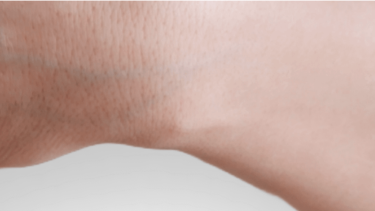Radiodermatitis
Radiodermatitis is a skin toxicity caused by therapeutic radiation (radiotherapy), manifesting as an inflammatory skin reaction. Radiodermatitis can be defined in 2 types1:
- Acute: skin lesions caused by irradiation appear within 90 days of the start of treatment.
- Chronic: lesions appear more than 90 days or several months, even years after the end of radiotherapy.
- Read more
-
Depending on the stage of radiodermatitis, lesions are erythematous (red), inflammatory and pruritic (itchy), and may also be dry or moist. These lesions are often painful and may lead to secondary bacterial infection.
Radiotherapy destroys the targeted (cancerous) cells, but can also cause damage to healthy cells in the vicinity of the treated area.
This is the most common side effect of radiotherapy. At least 50% of cancer patients are treated with radiotherapy1, 2 and up to 95% of breast and head and neck cancer patients receiving radiotherapy will develop radiodermatitis1.
1 - Lacovelli, N. A., Torrente, Y., Ciuffreda, A., Guardamagna, V. A., Gentili, M., Giacomelli, L., & Sacerdote, P. (2020). Topical treatment of radiation-induced dermatitis: current issues and potential solutions. Drugs in Context, 9, 1-13. https://doi.org/10.7573/dic.2020-4-7
2 - Seité, S., Bensadoun, R. J., & Mazer, J. M. (2017). Prevention and treatment of acute and chronic radiodermatitis. Breast Cancer: Targets and Therapy, Volume 9, 551-557. https://doi.org/10.2147/bctt.s149752


Summaries of publications and clinical results
Find all our summaries by expertise.
View all summariesWant to read on?
This access is reserved for professionals, registered on Pierre Fabre For Med.
To access the full content, please register or log in if you already have an account.


